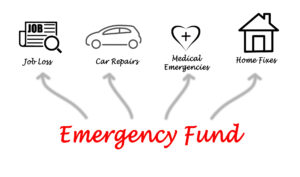We are approaching the end of the year, and this is when you start hearing people mention RMD’s because they need to be satisfied by the end of the tax year—December 31st.

What are they?
RMD’s are distributions that you must take from a retirement account. Essentially, the government has given you (or the account owner) a tax break for saving this money in a retirement plan and RMD’s help with getting the money back in circulation and tax revenue for the government.

Who has to take them?
This is where it gets complicated. We can break this into two groups of people: age based for your own retirement account and inherited retirement accounts.
- Age based for your own retirement accounts
- You must start withdrawing money annually from your retirement accounts (except ROTH IRA’s) the year you reach age 72 (this was age 70 ½ if you reached 70 ½ before 1/1/2020).
- How much do you have to take? This is based on your age, and you follow the Uniform Life Table from the IRS—there are a few exceptions that may require another table. You can check which table to use on the IRS site. Essentially, if you are required to take a distribution in year 2024, you see what age you will be in 2024 and divide your account value on January 1, 2024 (or December 31, 2023, because they are the same number) by the factor for your 2024 age in the table. You do this each year based on your age until you empty the account, or you are no longer with us.
- Inherited retirement accounts
- This is where it gets really tricky. There are a couple of moving parts. The first is figuring out if you are an eligible designated beneficiary. For the most part, this includes surviving spouses, disabled individuals, minor children or an individual who is not more than 10 years younger than the deceased owner.
- These eligible designated beneficiaries can take distributions over their own life expectancy, except for minor children. Minor children must distribute the account completely within 10 years of reaching age 18.
- If you are not an eligible designated beneficiary, then you must distribute the account within 10 years from the date of death of the original account owner. You also may be required to take annual distributions during those 10 years as well.
- This is where it gets really tricky. There are a couple of moving parts. The first is figuring out if you are an eligible designated beneficiary. For the most part, this includes surviving spouses, disabled individuals, minor children or an individual who is not more than 10 years younger than the deceased owner.
What happens if you do not take them on time?
There is a penalty for not taking your RMD and it is a big one—FIFTY (50)percent! You still need to take the RMD, pay taxes (federal and possibly state) on the amount AND pay a 50% penalty. All of this adds up and eats away at your distribution, so you really want to avoid these penalties.
Bottom Line
The bottom line is that you just need to know that these rules exist. There are people (like Financial Journey!) that can help you with the details of figuring this out—and it will most likely cost you less to hire some help than to pay one penalty of missing your RMD.
Financial Journey LLC is a registered investment advisor offering advisory services in the states of Alabama, Florida, Virginia and in other jurisdictions where exempted. Information provided is for educational purposes only and not, in any way, to be considered investment or tax advice.






